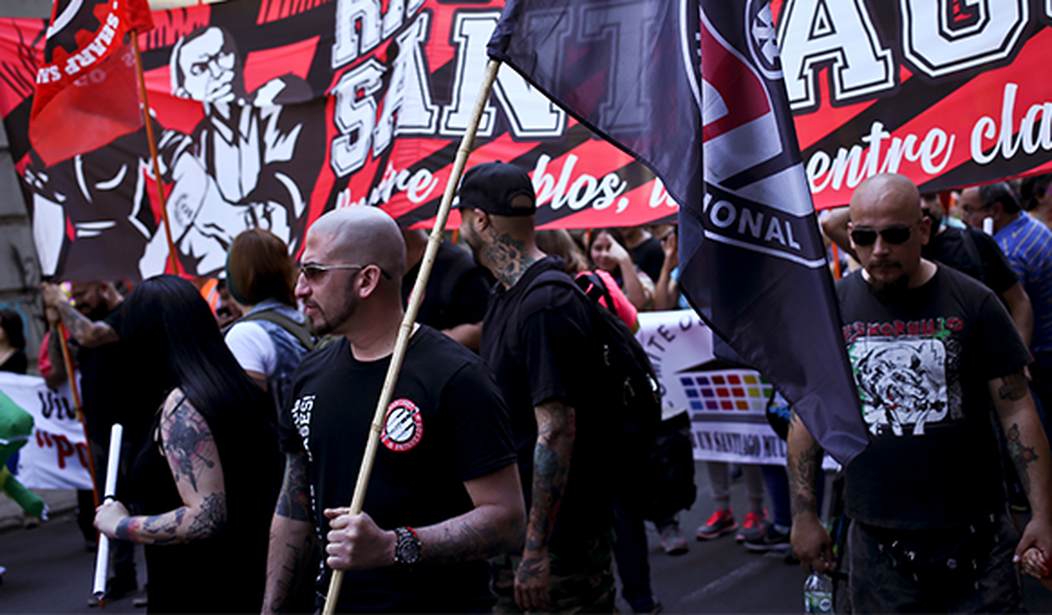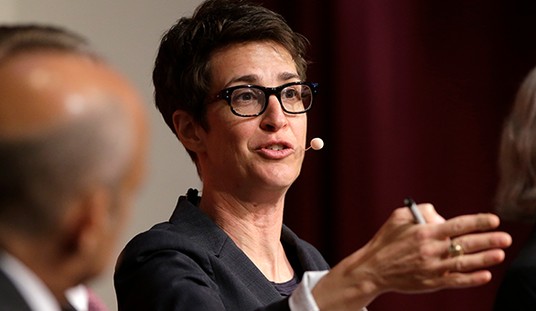When political conflict crosses over into physical force, ideological “martyrs” are inevitably created. For the dead, it’s a tragedy, but to their causes, it is often a windfall. In the immediate aftermath of the German defeat in the Great War, the Communists attempted an armed insurrection, which ended in failure.
The revolt was improvised and small-scale and was quickly crushed by the superior firepower of government troops. Berlin was largely undisturbed. Long-distance trains continued to run on time and newspapers remained on sale, as the rebels passively confined themselves to only a few select locations.
But the Communists came away from the fiasco with two martyrs: Rosa Luxemburg and Karl Liebknecht. One hundred years after their deaths, the European left still reveres them as the Marxist saints. The American left-wing magazine Jacobin even took time to remind its readers of the name of Luxemburg’s executioner so future generations might despise him. Luxemburg and Liebknecht’s fame outlived their insurrection.
On January 15, 1919, the leaders of the German revolution were murdered by far-right soldiers enraged by the rising socialist movement. The man who masterminded the killings was Waldemar Pabst — a fanatical nationalist officer whose paramilitaries became the rank and file for Nazism.
As a Spanish scholar observed, politics is practiced by the living on the bones of the dead. No sooner had the Nazis come upon the German scene than they sought to create political martyrs of their own to match Luxemburg and Liebknecht. Goebbels achieved this by raising a fairly unremarkable Nazi street casualty named Horst Wessel to fame as a mystical symbol of the German struggle.
Wessel was living in a flophouse when he was killed by “Albrecht ‘Ali’ Höhler, an armed pimp, perjurer and petty criminal. Höhler, a heavily tattooed cabinetmaker who had just recently been released from prison … a Communist and a member of the Red Front Fighters’ League,” possibly over money, possibly over a girl. Not very promising material in itself but in Goebbels’ hands, enough.
Goebbels had been looking for someone to turn into a martyr for the Nazi cause… Although Goebbels could not get Hitler to attend Wessel’s funeral, Hitler did speak at Wessel’s grave three years after his death … the “enormous procession … led by Hitler, Goebbels, Ernst Röhm, and other top officials of the [party], … marched to the St. Nicholas Cemetery … Hitler spoke of Wessel’s death as a symbolic sacrifice.” … the stage was set as an altar made from “laurel trees, branches, candelabra and a larger-than-lifesize portrait of Wessel”. Hitler lavished praise on “those fanatics who are consumed by the great task of their age” – “fanaticism” being a positive virtue among the Nazis – “who live for that task and who die for it … [they would] later be not only the martyrs of their struggle but also the seed from which the subsequent harvest [would come]”.
Goebbels continued to use the martyrdom of Wessel as a propaganda device for years. At the 1934 Nuremberg Party Rally, a group of Hitler Youth sang an anti-Christian song which included the lines “We don’t need any Christian truth … We follow not Christ but Horst Wessel”
Goebbels understood the formula for making a good political martyr lay not in the deceased himself but the propaganda treatment of his life. The Nazi media machine lost no time producing hagiographies based on Wessel’s life or on persons killed in similar circumstances. Hans Westmar, S.A. Mann Brand, and the life of Herbert Norkus are examples of these.
If the Nazis had not lost the War, Horst Wessel might rival Che Guevara in fame. Guevara himself was a complete operational failure in Bolivia, yet “celebrated poets such as Pablo Neruda, Allen Ginsberg, Julio Cortázar, Nicolas Guillén, Derek Walcott, Al Purdy, Rafael Alberti, Ko Un, and Yevgeny Yevtushenko regard Che as ‘the world’s icon of rebellion.’ In September 2007, Guevara was voted ‘Argentina’s greatest historical and political figure.” Such is the power of the propaganda treatment.
Key to making a successful political martyr is personalizing the Hero, making him into someone you might aspire to be — if you left out the shabby bits and got him played by a glamorous actor. Millions are familiar with the “iconic photograph of Marxist revolutionary Che Guevara taken by Alberto Korda.”
The Maryland Institute College of Art called the picture a symbol of the 20th century and the world’s most famous photograph. Versions of it have been painted, printed, digitized, embroidered, tattooed, silk-screened, sculpted or sketched on nearly every surface imaginable, leading the Victoria and Albert Museum to say that the photograph has been reproduced more than any other image in photography.
By contrast, almost nobody can name any of the “38 Albanian Catholics, all killed between 1945 and 1974 by their country’s Communist regime,” even though they were approved by Pope Francis for beatification in 2016. Nor are there many who even know that:
At least 21 million people are believed to have died in repression, persecution and “terror famines” after 1917, including 106,000 Orthodox clergy shot during the 1937-8 Great Purge alone, according to Russian government data. A total of 422 Catholic priests were executed, murdered or tortured to death during the period, along with 962 monks, nuns and laypeople, while all but two of the Catholic Church’s 1240 places of worship were forcibly turned into shops, warehouses, farm buildings and public toilets.
That’s because they are faceless multitudes without a Goebbels to burnish their fame nor any Alberto Korda to immortalize their image. A hundred million people may have been killed by Communism, but the world mourns the Communist because his face is on a t-shirt. Given this, it is easy to understand why antifa wants to control who can video the riots/protests in Portland.
YOU’RE NOT ALLOWED TO FILM!” is a cry you hear incessantly at protests in Portland, Oregon, always shouted at close range to your face by after-dark demonstrators. You can assert that, yes, you can film; you can point out that they themselves are filming incessantly; you can push their hands away from covering your phone; you can have your phone record them stealing your phone—all of these things have happened to me—and none will have any impact on their contention that “YOU’RE NOT ALLOWED TO FILM” and its occasional variation, “PHOTOGRAPHY EQUALS DEATH!”…
I wondered, the first time I attended the protests at the federal building back in July, who all these young people with PRESS emblazoned on their jackets or helmets were. I asked one such guy who he worked for. …
“Independent Press Corps,” he told me. As it turned out, dozens of other young PRESS people happened to work for the same outfit, which I at first assumed was a fancy way of saying “I want to report stuff and stream it on my Instagram.”
This turned out to be naive. The IPC is an organized group in league with the activists, and it is usually their footage you see streamed online and recycled on the news: mostly innocent protestors being harassed and beaten by police.
They want to control who’s on the t-shirt. Photography equals death only for those taking unauthorized images. Those crafting the authorized images are busy making the new political martyrs of the 21st century.
Follow Wretchard on Twitter or visit Wretchard.com
‘This Is No House of God!’ Black Lives Matter Activists Yell as They Harass Church in Upstate NY
Did Nancy Pelosi Just Condone Mob Rule?
Support the Belmont Club by purchasing from Amazon through the links below.
Books:
Spillover: Animal Infections and the Next Human Pandemic, by David Quammen. This prescient book, that reads like a thriller, predicted the Covid-19 coronavirus pandemic. Science writing at its best.
The Impeachers: The Trial of Andrew Johnson and the Dream of a Just Nation, by Brenda Wineapple. When President Abraham Lincoln was assassinated and Vice-President Andrew Johnson became “the Accidental President,” it was a dangerous time in America. Congress was divided over how the Union should be reunited after the Civil War and Johnson ignored Congress and acted like a king. The book dramatically evokes this pivotal period in American history, when the country was rocked by the first-ever impeachment of a sitting American president, and brings to vivid life the extraordinary characters who brought that impeachment forward.
What Jesus Meant, by Garry Wills. People on both sides of the political spectrum often cite Jesus as endorsing their views. But in this New York Times bestseller, Wills argues that Jesus subscribed to no political program. He was far more radical than that. This book is an illuminating analysis for believers and non-believers alike and is a brilliant addition to the conversation on religion.
For a list of books most frequently purchased by readers, visit my homepage.
Did you know that you can purchase some of these books and pamphlets by Richard Fernandez and share them with your friends? They will receive a link in their email and it will automatically give them access to a Kindle reader on their smartphone, computer or even as a web-readable document.
Open Curtains by George Spix and Richard Fernandez. Technology represents both unlimited promise and menace. Which transpires depends on whether people can claim ownership over their knowledge or whether human informational capital continues to suffer the Tragedy of the Commons.
The War of the Words, Understanding the crisis of the early 21st century in terms of information corruption in the financial, security and political spheres
Rebranding Christianity, or why the truth shall make you free
The Three Conjectures, reflections on terrorism and the nuclear age
Storming the Castle, why government should get small
No Way In at Amazon Kindle. Fiction. A flight into peril, flashbacks to underground action.
Storm Over the South China Sea, how China is restarting history in the Pacific.










Join the conversation as a VIP Member